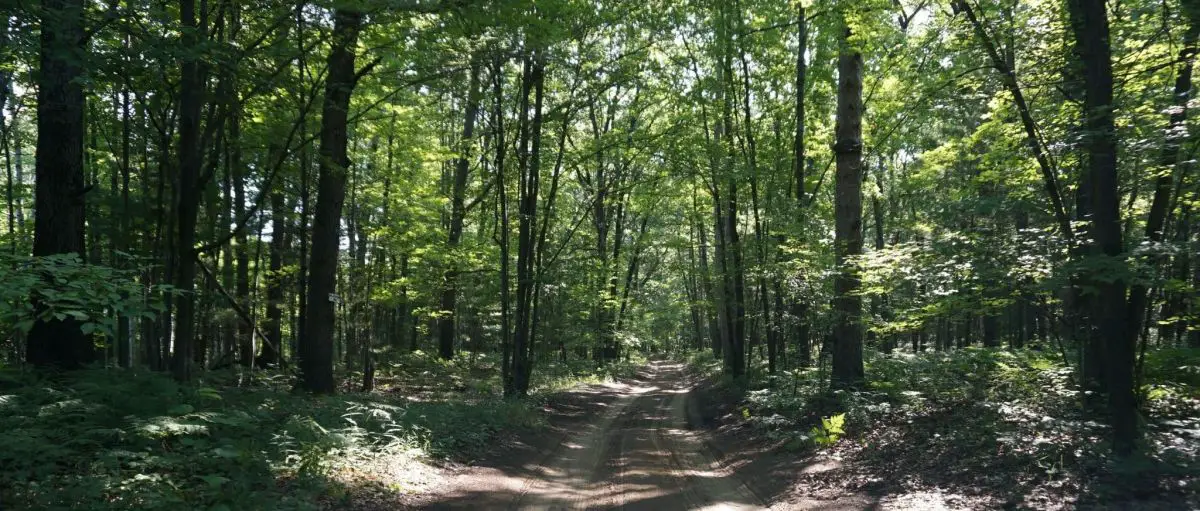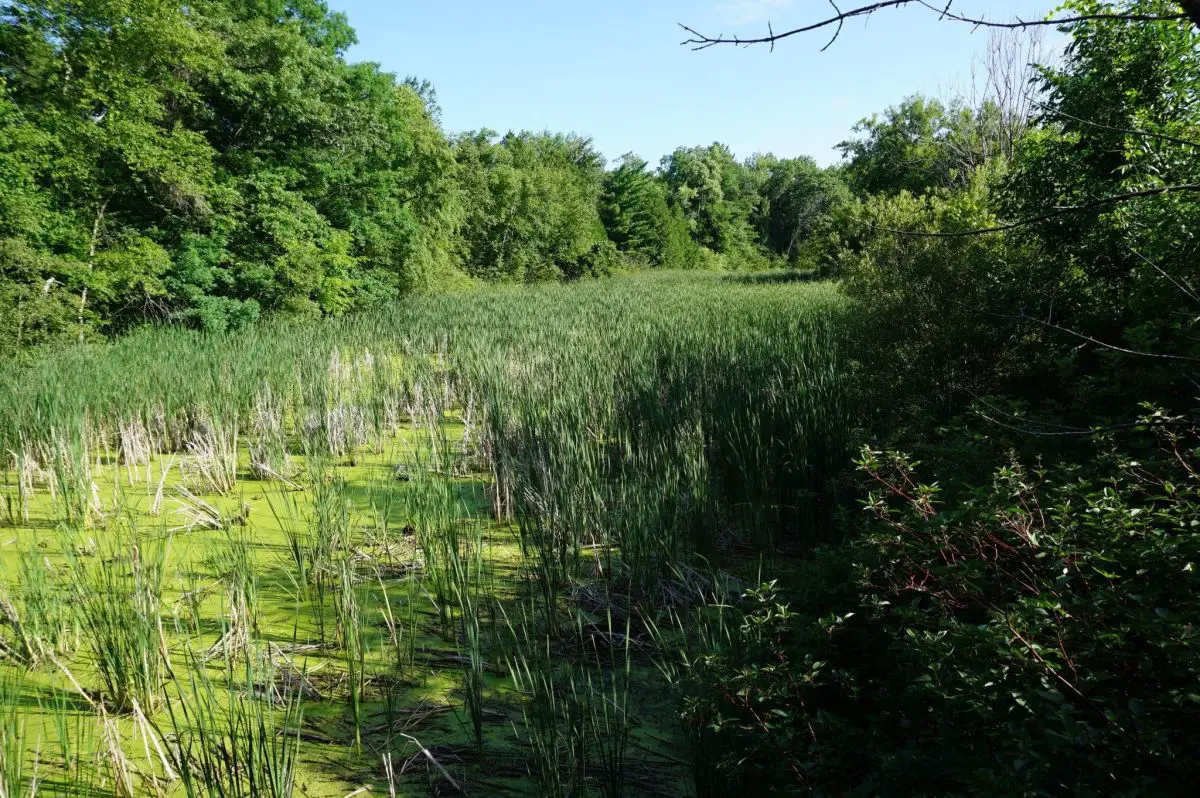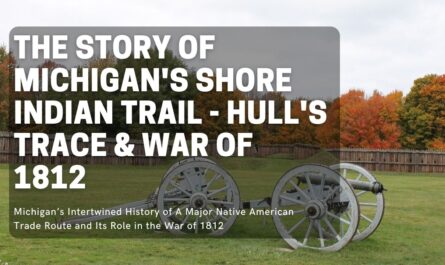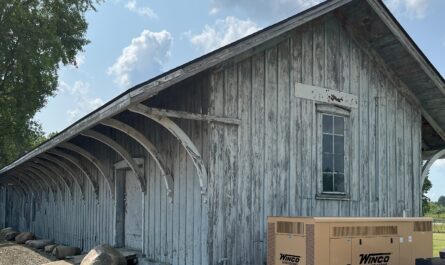
A Mystery at Rush Lake State Game Area
A Rush Lake Competitor to Grindstone City?

Babbitt’s Small Quarry Fails at Rush Lake

The last evidence of the Babbitt quarry can still be seen at the end of Quarry Road. Specifically, the 1800s excavations are on the edge of the Rush Lake State Game Area in Lake Township. The site can be seen on Google Earth of the large holes of the former stone quarrying operations. The Babbitt quarry was the smallest and shortest-lived of the sandstone quarry operations of the Upper Thumb.
Historic Site of Babbitt Sandstone Company
Sadly there is little documentation on the company other than its listing in the trade journals of the late 1800s. I wish there was a picture of the large dock used to ship the stone out of the quarry. It must have been tremendous as this area is shallow for at least a hundred yards from the beach’s edge.
Research on Rush Lake
- Isabella County Enterprise, 27 March 1885
- Geological Survey of Michigan Lower Peninsula 1896-1900, State of Michigan
- A Biological Survey of the Sand Dune Region on the South Shore of Saginaw Bay Michigan, 1910-1911, State of Michigan
Similar Stories to Quarry Operations at Rush Lake

- Coal Mining Operations of Sebewaing – Discovery of surface and shallow coal veins was a result of grist mill construction in 1835 west of Jackson Michigan. State geologist Douglas Houghton confirmed the existence of coal deposits in 1837.
- Grindstone City, the Thumbs First Industry – In the late 1800’s Grindstone City, was one of the first flourishing industry towns and produced the largest and finest grindstones in the world.
- Buried Inca Gold at Loosemore’s Castle – There is a tale in some of the historic newspaper papers of Michigan’s Upper Thumb that speaks of Indian gold and a hermit who owned a bit of land around what was called Loosemore point. Hugh Loosemore kept to himself. He collected driftwood along the beach from ships that had broken up near the point, and it was plentiful.
- The Upper Thumb Led in Michigan Salt – The first successful attempt to manufacture salt in Michigan was made by the East Saginaw Salt Manufacturing Company in 1859. The success of this company led to the rapid development of the industry in the Saginaw Valley, where the blocks were operated in connection with sawmills.
- Sebewaing Cider and Jelly Factory was a Treat – The 1880s was a decade of huge change in Michigan’s Upper Thumb. The lumbering era was dwindling, and family farms were getting firmly established after the great fires of 1871 and 1881. The agricultural era began, and the Thumb region would soon excel in bean and sugar beet production.
- Android App for Thumbwind – Thumbwind has an Android App for those who want to keep up to date on activities and news of the Upper Thumb anytime, anywhere.





